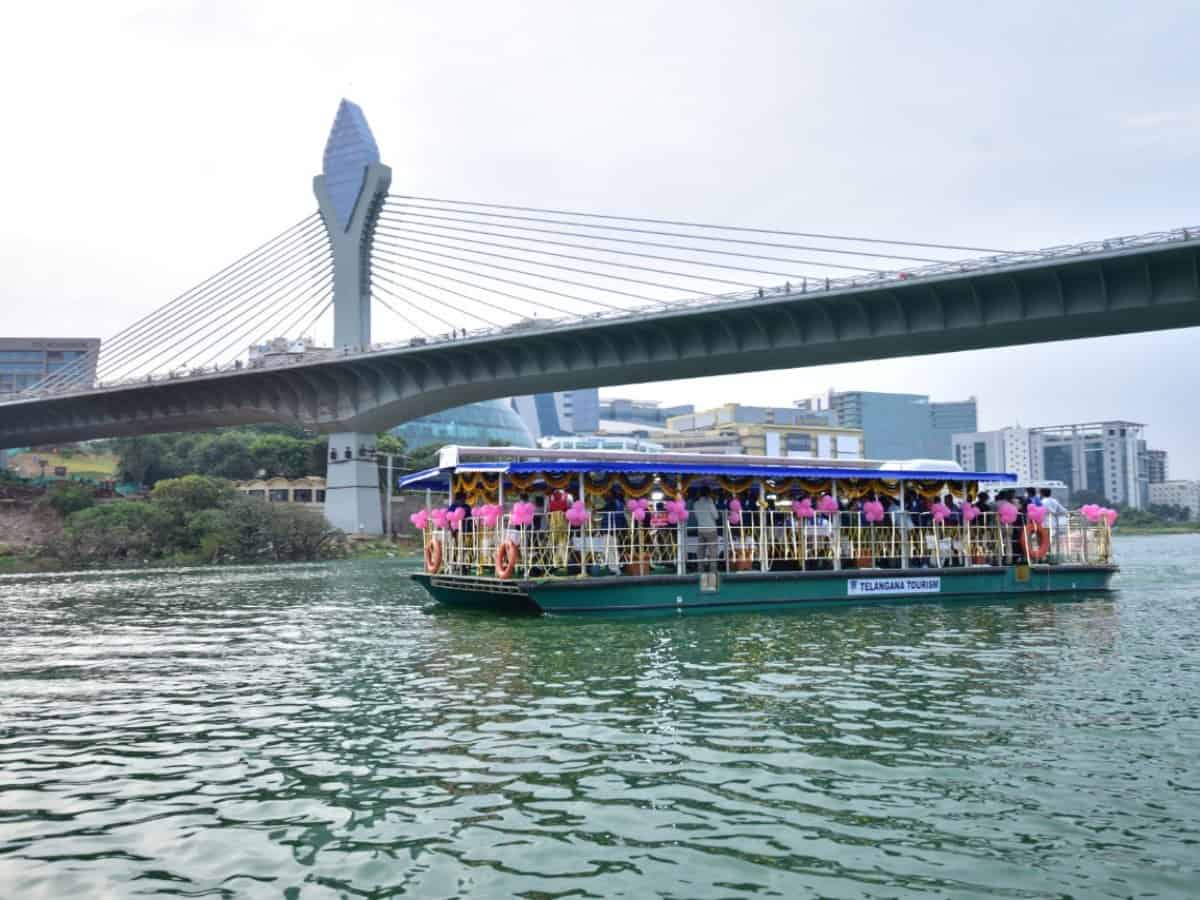
Hyderabad: In a distressing sight, hundreds of dead fish were recently seen afloat around the periphery of Durgam Cheruvu in Hyderabad. Even though the civic authorities were quick to remove them from the surface of the water body, media reports on the dead or dying fish in the lake waters prompted the Telangana High Court to take suo motu cognizance of the contamination and encroachment of the water body.
Once a serene and scenic lake, Durgam Cheruvu has now tragically transformed into a putrid, algae-ridden water body emitting a foul smell. In recent months, similar incidents of contaminated water affecting aquatic life were witnessed in other water bodies in the city, like the Lotus Pond and Chiran Kunta in KBR National Park.
Even as several conservation efforts led by the GHMC, revenue and irrigation departments were launched in the past, “the condition of water bodies remains appaling,” said a local resident. “It may not be visible under the shimmering lights from skyscrapers around the water body, but it doesn’t take an expert to tell that the water is poisonous,” he added.
Expressing serious concern, chief justice of Telangana High Court Justice J Anil Kumar said on Saturday, “We will monitor the issue to ensure that the lake is brought back to a healthy stage.”
As soon as the court took up the issue, the government pleader rushed to submit status reports of the rejuvenation works even though no notices were served, drawing the ire of the HC bench.
“You may furnish the report, but we know the contents. You are anxious to defend the very same officers who reduced this natural lake to what it is today,” the bench said. “We can’t rely on the reports of such officials.”
Court appoints amicus curie
The court then appointed senior counsel Vedula Srinivas as amicus curie to assist in identifying experts in the field, who will not be influenced by officials. “Learned Amicus prays for short accommodation to enable him to suggest a committee of experts who will visit Durgam Cheruvu and submit a report with regard to its existing condition including the encroachments made therein as well as quality of water,” read a court order. The matter has now been listed on December 22, 2023.
The court also said that a similar exercise was undertaken in Karnataka for restoring a lake, which was successful.
What polluted Durgam Cheruvu?
Originally spanning over 150 acres, the lake was built between 1518 and 1687 to supply water to Golconda Fort residents. It was revered for its reliability, even during a Mughal siege.
In the late 1950s, the area around the lake was pristine, but urbanisation gradually encroached upon its surroundings. By the 1970s, it was a popular spot for picnics and leisure activities. The early 2000s saw the AP government actively promoting tourism, and by 2001, it planned to expand boat services. It was then that the signs of encroachment and pollution emerged.
Despite court orders to protect the lake, various measures failed. By 2007, sewage treatment plants were inaugurated, yet the lake continued to degrade. In 2008, allegations surfaced of encroachment by the Andhra Pradesh Industrial Infrastructure Corporation. By 2010, the lake faced a shrinking water spread due to waste dumping.
Throughout the 2010s, pollution escalated, aquatic life vanished, and sewage inundated residential areas during rains. Various plans to revitalise the lake, including clean-up initiatives and court orders, failed amid growing encroachments.
By 2015, encroachment reached alarming levels, leading to the suspension of boating activities. The lake’s surroundings became a real estate hotspot, with proposed infrastructure developments.
In 2016, despite public outcry and protests, plans to construct a hanging bridge across the lake were approved. The ongoing encroachments and uncontrolled urbanization have led to the lake’s demise, signifying the tragic irony of urban development compromising natural treasures.



